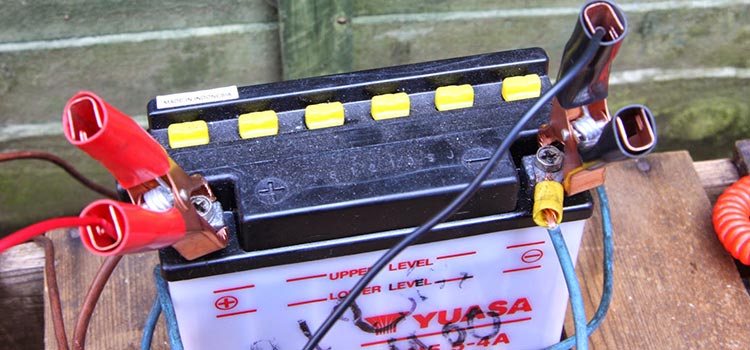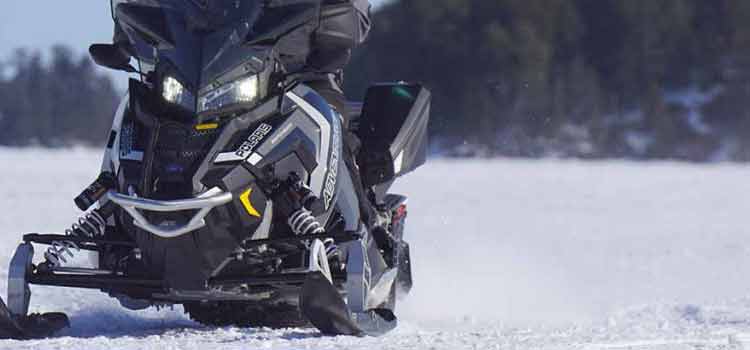Charging a battery can be intimidating, and you need to know how much time it will take to charge your snowmobile battery. There is a lot of misleading and wrong information available on the internet. I am here to debunk it all and give you a clear answer (with examples) and a mathematical equation to calculate the charging time for practically any battery you want.
So how long does it take to charge a snowmobile battery? It depends on two major things: the capacity of a snowmobile’s battery and the charging current supplied by the charger. For example, a 20Ah snowmobile battery connected to a 5A charger will take around 6.2 hours to completely charge from a dead state.
The charging time of a battery also depends on how much the battery is drained, the type of the battery, and its health. It also depends on environmental factors like temperature and humidity.

If a battery is healthy and in good condition, it will take more time to charge. This is because it will take more time to energize and fill up the cells. After all, they can store a lot more energy in them.
Where on the other hand, a dead battery does not have much capacity left to store charge. So it will take less time to fully charge, and drain even faster or does not hold any charge at all.
Then comes the charger and the type of it. The charger must provide at least 10% of the Ah rating of the battery for it to begin charging the battery. For example, if a battery is rated at 20 Ah, then a charger should provide a minimum of 2 Amps of charging current.
A charger rated at 4 Amps will be sufficient enough to provide 2 Amps of charging current. It is because of the energy losses happening (in the form of heat and radiation) in the charger when converting mains power to DC for charging the battery.
To solve this mystery, we can use the magic of math to calculate the charging time required to completely charge a battery.

For example, if we have a 20Ah SLA battery connected to a battery charger providing 5 Amps of charging current, it will take around 4 hours to completely charge the battery.
Of course, the 4 hours would be correct if we lived in a perfect world where energy losses and variables do not exist.
In the real world, this charging time would be significantly higher or lower. It depends on external factors, like, how much the battery is currently charged, and its actual capacity. It also depends on the charging energy lost in the charger.
Charging time also depends on weather

The charging time also varies due to weather conditions. Cold weather slows down the flow of electrons. It results in slow charging, and you might end up with an undercharged battery. Similarly, in hot weather, the flow of electrons is increased. It will enhance the speed of charging, and in some cases, it might cause overcharging.
So, how long does it actually take to charge a snowmobile’s battery?
Unfortunately, without extensive and precise tests, we can not calculate the exact charge levels and the total charge capacity of a battery.
But, we can easily calculate the third factor. That is the power delivery efficiency of a charger and the charging efficiency of the battery.
Practically, it has been measured that there is almost 40% power loss in the battery itself while charging, and a 10% power loss in the charger. So to know the closest estimated time to finish the charge, we have to consider these losses.
In our example, we assume that we are going to charge a Weize YTX14-BS 18 Ah battery by using NOCO Genius 2 charger.
First we need to calculate the charging losses in the battery.
18 x (40 / 100) = 7.2 (here 18 is the capacity of the battery in Amp hours, also referred as Ah)
So, Actual Ah of the battery and the sum of its losses is 25.2.
Now we will calculate the general 10% power loss of a charger.
2 x (10 / 100) = 0.2
This way, we know that the actual charging current of a 2A charger will be 1.8 Amps.
Now, with the same formula that we used earlier to find out the charging time required for a 20Ah battery,
Charging time (hrs) = 25.2 / 1.8
Actual Charging time = 14 hrs.
Therefore, our 18 Ah battery will take about 6.2 hours to charge with a charger rated at delivering 2A of charging current. This number does not account for weather conditions.
There is always a difference between the charging amps of a battery charger on paper and the actual charging amps it provides. I have written an article on the best battery chargers for a snowmobile’s battery here. I have reviewed different chargers, their features, and their actual charging amps.
Now in real world:
For this test, I took out my snowmobile’s battery (YUASA 12 Ah). It was not completely dead, but dead enough that it could not spin the starter motor of my snowmobile.

I connected this battery with a NOCO Genius 2 charger and turned on the charger. The charger showed one led, which indicated that the battery was charged below 25%. It took around 6 hours and 55 minutes to completely charge my 12 Ah battery by using a 12 Amp charger.
Now, if we compare the real-world charging time to our calculated charging time, we can see that it will take around 9.3 hours to charge a 12 Ah battery using a 2 Amp charger.
In our case, we had a battery that was already charged to about 25%. If we were to charge the battery using the charger, it would take 2.3 hours to charge it from 0% to 25%. So, it would take around 7 hours to charge the battery from 25% to 100%.
In my testing, the charger took almost the same amount of time to completely charge the battery from less than 25%.
We discussed an SLA battery in this example. But lithium batteries are much more efficient at taking charge and holding it. Therefore power losses in a lithium battery are very low, resulting in much faster charging times when compared to a standard SLA battery.
In the end...
The charging time of a battery depends on various factors, and I have tried my best to discuss them all in this post. Using the formula given above, you can calculate the estimated charging time of any battery if you know its capacity and the charging current of the charger.
The charging time is always approximate, and it depends upon weather conditions too. Lithium batteries have the least power losses, making them more efficient when charging.
Sources:
Research on the Battery Charging Strategy With Charging and Temperature Rising Control Awareness
Effect of the different charging techniques on battery life-time
Nice post very informative I have a 20 amp hour battery with a two amp charger I just poured the acid into the battery doesn’t that give it a little bit of power I’m still not sure how long I should charge a brand new 20 amp hour battery with a two amp charger that I just poured the brand new acid into the brand new battery shoot me an email if this is not too stupid for you